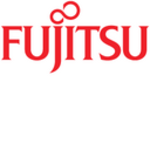What is most valuable?
I believe, compared to the C7000, which is the mainstream in Brazil, it delivers a significant amount of innovation and flexibility, and I think people there will love it. The way Brazilians see things is that, "Okay, I need something that works. I need something easy to manage, because it's expensive, manpower is expensive. And I need a reliable platform, which is easily managed, so everybody can understand and use it with ease, with no problems, and that delivers value to their business.
I love the satellite architecture for the Virtual Connect. I think this is great. I love the storage drawer, which you can present volumes to any compute node within the same frame. I understand why you cannot present storage to compute nodes on other frames, but that is a question that sometimes I get from customers. Why not? I say, "Okay, you have to have a cable running over and have another SAN switch on the second frame. It will not be easy. I don't know if HPE is satisfied with this approach. They're saying, "Okay, let's stick with the drawer presenting volumes within the same frame." But the satellite architecture it's incredible. It was very well thought out.
And the management ring, I think it's also great.
These advancements - regardless of the advancements on chips, on more memory, addressing, computing, etc., customers expect that - but with this architecture of the management rings, this is really nice. This is a very nice idea.
The Image Streamer, I see the value of it. Hopefully, customers will see the value of it, but I don't expect many Brazilians deploying Image Streamers, because they don't have this culture.
OneView, as a single point, a single management tool, it makes me delirious. It's really nice. People developing using the API for OneView, I don't see it too much. Brazilians are still at the beginning of this idea of consuming IT as a service. Their approach is, "Okay, I have all the APIs exposed and I can program my own Chef recipe and simple recipe and use and orchestrate Synergy the way I want." They are still in the early stages of this, but maybe it will gain traction in the future.
I rate Synergy a nine out of 10 because there's no perfection. But I think that in terms of the proposition of the product, what the product wants to achieve, they really achieved it. I was at the booth (at the Discover conference in Madrid) on the next generation of Synergy and I talked to an engineer. I asked what has changed? He said we changed some specs, etc. We delivered the Image Streamer composing Windows machines, we put the VC with an extra gig, etc. It was expected. It is a minor advance, in my opinion. This is not bad, this is good. This means they met their criteria, the whole criteria, in the initial launch of the product, so there is nothing to evolve into, all of a sudden.
So, to really evolve the product from where it is right now, it will take time. That means the product was very well conceived, they mostly meet their goals for the product. The next generation, let's say the ServerSpec for Windows, it's just minor stuff, but we expected it, so this is a very good sign. It's a very mature product from the start.
What needs improvement?
What I would like to see is a little bit more of architecture-oriented advertising campaigns or events for customers; not on the product itself, but more on the way they advertise products. They are too focused on the features. This is okay, but sometimes what I see that people lack is, "Okay, I understood the features, but how can I use this in practical terms? How can I put my Oracle in there? How can I use it for a VDI? Can I architect a huge SQL cluster with it, and what would be the best way to do that?"
I think that the documentation says that, but I don't see any events. I don't see any advertising in those terms.
In the end, it's more like they are giving the components, but they are not showing what you can do with the components. You can see you have all this, but what can I do from this? Can I make a cake out of it, or I can do an omelet? I can, but how? That's the missing link. They need to give me some ideas on how I can use this in such a way that I achieve my goals. This is the only thing that I really think the product lacks, a little bit more consumer-focused mindset.
When you are talking about the product, talking only about features is good for me, for the partner, because I understand how to use the features to make the cake, but they don't.
How are customer service and support?
It varies from area to area. From the storage guys, I get very strong support. They are very sympathetic guys, good knowledge. They are very smart people and they are really willing to help.
From the networking guys, so-so. I don't know exactly why, but they leave you a little bit, let's say, on your own. But, in that area, the HPE documentation is very good. So you don't have to fall back to support often.
Servers, I don't really need support, because you can find your way around.
But with other stuff, software stuff especially, say Data Protector - now it's Micro Focus - it was a total nightmare.
So, it varies from area to area and I can see within HPE they have different approaches in different areas. The storage guys are more like a family. They work together, they are committed together. The networking guys, they are more "I'm a self-made man, so it's me, it's him," it's not us. I feel that more or less. And servers, it's okay: "What do you need, give me a yell. I'll help you with that." Simplivity, I haven't had any experience with Simplivity as of yet. So, I can't tell you anything about it.
But for Synergy, the Synergy guys, they are very good, really supportive.
Which other solutions did I evaluate?
In Brazil, they have a culture of reusing things, they don't like to dispose of a server every three years or so. I know in Europe and United States, a refresh cycle of three years is absolutely normal and they are ready to scrap their G7, scrap their G8, and get the G9. But in Brazil you can find G5 easily, G5 and G6. They have this culture of extending the lifetime of the product as much as they can or until it breaks.
With Simplivity, I think that we can address that very nicely, because as you can expand, it's the latest technology and you can put so many things in it. You can put storage, it can present every compute node, you can support satellites and expand the chassis. I believe that this will address this behavior that the Brazilians have and they'll say, "Okay, so I can invest in this platform now and believe that seven years from now, it will be the same. I will still be able to put hardware on it, I can still use it." And that will create fidelity from them for HPE.
The only driver, I cannot state this strongly enough, the only driver that I face when with I'm a customer, and I meet Dell or I meet Lenovo there, is money. They like them because they're cheaper.
I have never heard a customer saying HPE has a better product. I have never heard anybody say a Dell server is better than an HPE server; a Lenovo server is better than an HPE server. I always hear them say it's cheaper. This is what compels them to buy Dell, on whichever level, whether it's networking, storage, servers.
Buyer's Guide
HPE Synergy
April 2025
Learn what your peers think about HPE Synergy. Get advice and tips from experienced pros sharing their opinions. Updated: April 2025.
850,671 professionals have used our research since 2012.
What other advice do I have?
I just took my certification in Synergy. I was one of the first technicians in Brazil who qualified for Synergy. The main driver for me to take the certification for this platform is because I deem Synergy like an evolutionary platform rather than revolutionary. I think the machine will be the revolution, but Synergy is an evolutionary platform.
HPE is really the leading platform. I heard once that HPE is a company that is run by engineers. And engineers are passionate about it. Dell doesn't create things. Dell just manufactures things. That's why I love HPE technology so much, because I understand that HPE is really about engineering stuff and creating stuff and doing it better. Dell, they are just getting parts somewhere. They are assembling it, and they are selling it cheaper.
That's why I really love HPE and I'm a strong partner. There's a strong partnership with HPE and I don't see leaving it anytime in the future. I come to the HPE Discover conference very often, attended the last Discover in Las Vegas. I'm attending this one in Madrid, and every time, the same: My commitment with HPE gets stronger and stronger and I really love the technology.
Disclosure: My company has a business relationship with this vendor other than being a customer: Partner










